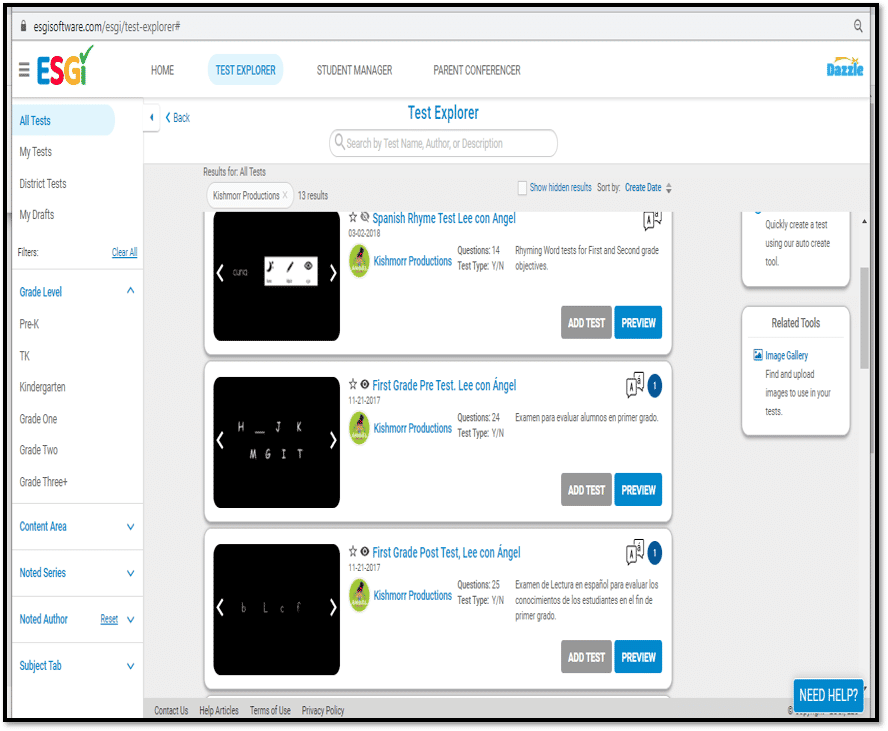Lee con Ángel and ESGI: Where Technology and Best Practices Meet
The online program started as songs and games. Later, stories and comprehension questions were written in Spanish with access on iPad and web.
"Necessity is the mother of invention." - That's how Lee con Ángel got its start. Bilingual teachers are painfully aware that there are more resources in English for children than there are in Spanish, but we don't want to accept that.
“We need an online program that helps kids develop literacy skills in Spanish!” said Bette Kish and Lori Morris, two Bilingual teachers from the Houston, Texas area who created Lee con Ángel. The online program started as songs and games. Later, stories and comprehension questions were written in Spanish. Soon Lee con Ángel, the app for iPads and a web version for desktops were ready for bilingual classrooms. Dual Language teachers started using this supplemental program in their classrooms. It works!!
Everywhere children are using Lee con Ángel, teachers report their students making excellent progress. Reading gains, language development, verbalization… light bulbs are going on everywhere! Special needs children jump with excitement when playing the interactive games. First graders donned with earphones sing along with the songs, completely engaged in the content of the program. Timid, non-verbal Kindergartners begin to communicate and read along with Ángel as their guide. This is the kind of progress every teacher dreams about for their young ELLs.

Not surprisingly, Lee con Ángel has been caught up in the process of proving research regarding language acquisition and Bi-literacy. For decades, bilingual teachers have known the research.
What a student learns in one language is transferred and applied to the second language. As teachers, we also know from experience, that as one learns a second language, the first language is strengthened. This usually was the case for bilingual students learning English as a second language.
Now, we have students learning Spanish as a second language with Lee con Ángel. The same premise applies, only now the languages are reversed! How exciting to see all children of any race or ethnicity learning Spanish as a second language and developing bi-literacy or multi-literacy in the process!
ESGI has played a crucial role in this journey because it hosts the digit versions of Lee con Ángel tests. Teachers who use ESGI Software for assessment purposes have the best of the digital age. Teachers we have met use ESGI for parent reports, report cards, RtI data disaggregation, test-item analysis to create small groups, and classroom management. Combine ESGI with Lee con Ángel in the classroom and you have a winning combination!
Lee con Ángel can be used for teaching:
- Spanish concepts of print in mini-lesson format. Comprehension practice (similar to standardized online tests).
- Fluency-building stories that help students jump levels of reading.
- Interactive games to develop phonemic awareness.
- Original songs that bring all the sounds of the Spanish language to life.
Suddenly the classroom has become a place where students work independently to gather and practice skills, while teachers work with smaller groups to pinpoint specific skills. Kishmorr Productions, LLC has completed one successful pilot in a Dual Language Program within a suburban school district near Houston, Texas.
You can read the whitepaper here. This data was collected using ESGI making the process painless, quick, efficient and the data so easy to analyze. All thanks to the user-friendliness of this software. The second pilot is underway in another school district near the border of Mexico-Texas.
ESGI is playing a vital role in the collection of this data. We are eager to share the results of how well students learn to read using tests that are already on the ESGI software that coordinate with Lee con Ángel. In the future, we expect to show how skills are strengthened in the first language as the students develop literacy in Spanish using Lee con Ángel. Having so many tests in ESGI allows teachers to add to their "tool bag" of instructional strategies. We know that the future is bright for students learning to read in Spanish.